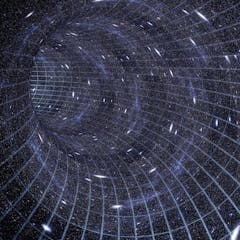
Articles on Albert Einstein
Displaying 41 - 60 of 109 articles

If humanity wants to travel between stars, people are going to need to travel faster than light. New research suggests that it might be possible to build warp drives and beat the galactic speed limit.

If we want real public understanding of new findings, we must also open up peer review.

The element was discovered in the fallout of a thermonuclear blast.

Quantum mechanics is strange. A philosopher explains just how strange, and what it means for reality.

Field theory describes the universe as energy flowing along unending lines. With this perspective, it is possible to define a new fundamental building block of matter.

The h-index has become an indicator of quality for many researchers and may influence the allocation of research funds. But some question its value.

There are two types of time travel: going back in time and going forward in time. And remarkably, people can feel time at different rates - but usually don’t notice it.

Albert Einstein may have been the ultimate example of a visionary genius, but that did not stop him from twice losing his way due to beliefs that were perhaps not so scientific.

One of Einstein’s weirder predictions is that massive, spinning objects exert a drag on space-time itself. Now an orbiting pair of unusual stars has revealed this effect in action.

Scientists turned Earth into one giant telescope to capture the uncapturable.

Edgar Allen Poe, Sigmund Freud and cognitive scientists have all wrestled with the human tendency to behave in ways that are irrational and self-defeating.

The crucial phase of our discovery of black holes took place in a suitably dark period of human history – World War II.

A black hole is an object with such a strong gravitational pull that nothing, not even light, can escape from it.

It’s all about the strong gravitational field of the black hole.

Astronomers traced a single star as it passed close to the black hole at the centre of our galaxy, and detected the telltale signature of Einstein’s gravity in action.

A natural view of the world appealed to Albert Einstein.

Exactly 99 years after Einstein’s theory of general relativity was proven right in our own solar system, scientists show that it also holds true for entire galaxies.

Jets from supermassive black holes behave in mysterious ways. Now scientists have now worked out what’s really going on.

A new analysis shows how family background influences who grows up to invent. The key to turning things around? Expose kids to more inventors.

Research shows that funny people are also nicer to be around.





